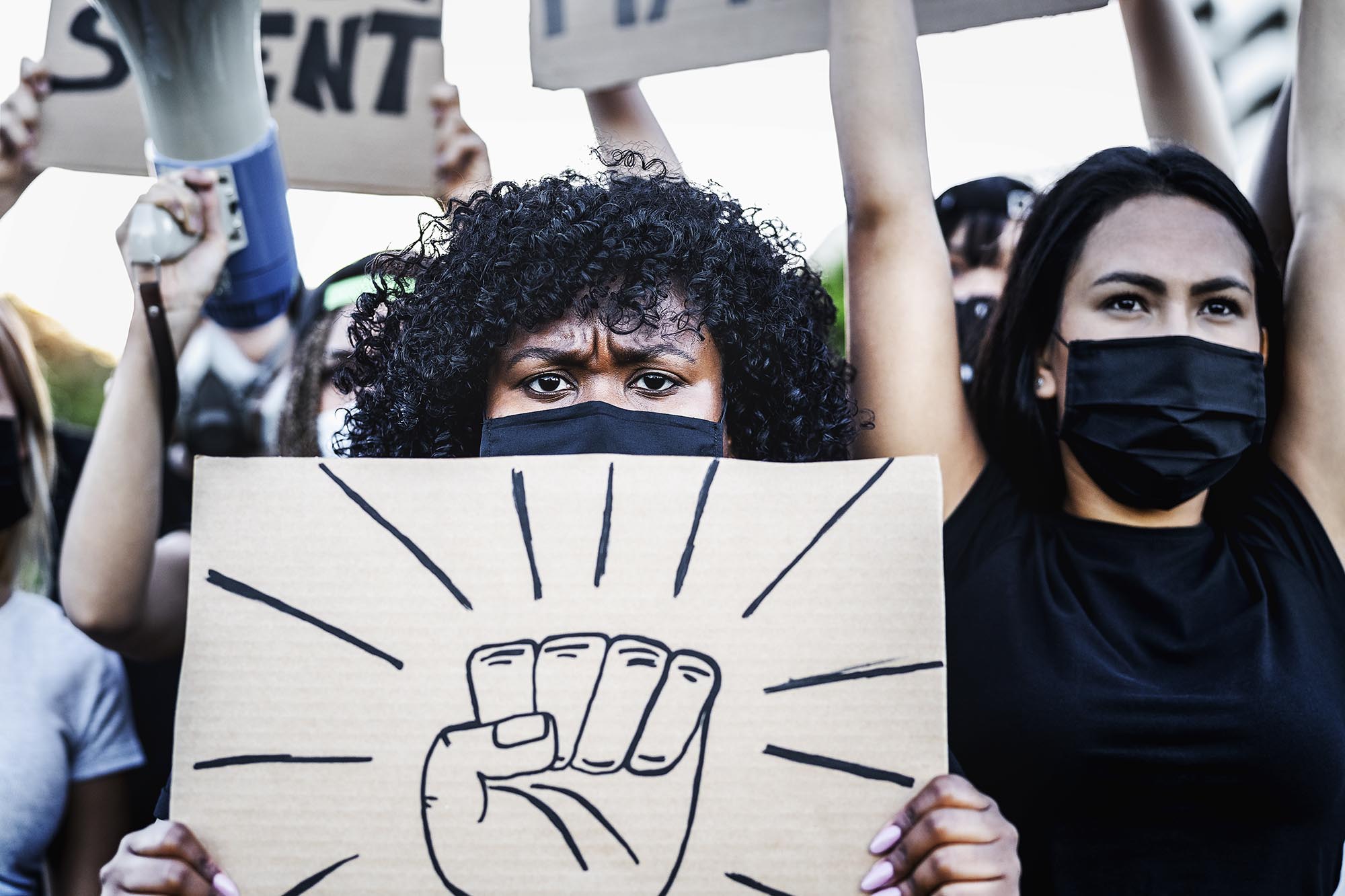This summer, thousands of companies published statements recommitting to fighting racism and promoting equity in the wake of George Floyd’s death at the hands of Minneapolis police, and amid ongoing Black Lives Matter protests and a pandemic that is disproportionately affecting minority communities.
Laura Morgan Roberts, a professor of practice at the University of Virginia’s Darden School of Business, is among those trying to answer questions about how organizations turn those statements into action. How can leaders make sure their organizations actually reflect the values they profess? What can we do to create workplaces and communities where people of all backgrounds have an equal chance to thrive?
It is hard and ongoing work, as Morgan Roberts well knows. She has published more than 50 articles and teaching cases, and edited three books: “Race, Work and Leadership,” “Positive Organizing in a Global Society” and “Exploring Positive Identities and Organizations.”
It is also work that Morgan Roberts finds particularly rewarding to undertake at UVA, her alma mater and an organization that is both grappling with its past and working to create a welcoming learning environment and more equitable future for students, staff, faculty members and surrounding Charlottesville communities.
“One of the things that attracted me to UVA as a student was the presence and the vitality of Black student leaders. There was such a strong sense of community and dynamism from young Black leaders that inspired me to learn and grow,” said Morgan Roberts, who earned a bachelor’s degree in psychology in 1996. “My connections to UVA extend even deeper, which I have since explored as part of my family history.”

Laura Morgan Roberts is a professor of practice at the Darden School of Business and a UVA alumna. (Photo: Darden School of Business)
Morgan Roberts learned that one of her ancestors, Rosa Barber, worked as a cook on Grounds during the 19th century.
“I have a lot more questions than answers about [Rosa Barber] and her life and her connection to UVA, but to know that I am a descendant, an alumna, and now a professor, at this point in history, doing work on racial justice in our society and at our university – that is so powerful for me,” Morgan Roberts said. “It truly feels like a full-circle season, that I am here in this space, at this time, with a deep sense of purpose, and I draw on that to remain hopeful and focused in doing this work, because it can be discouraging and exhausting.”
We recently spoke with Morgan Roberts about her work and how it applies to current events, as organizations strive to create more equitable work environments.
Q. Your work focuses on maximizing human potential in organizations, particularly regarding diversity and inclusion. This summer, a lot of companies have promised to increase those efforts. What are you seeing, and what are some concrete steps those organizations can take?
A. In the immediate aftermath of George Floyd’s murder, we saw a sense of moral outrage and conviction, by many organizations, to use their platform and resources to address what has clearly been a widespread and pervasive pattern of racial injustice. Many leaders felt that they should do something to stop the injustice, and that they should signal that Black lives do matter, and we saw a lot of public statements to that effect.
Since then, we have been at various stages of translating that commitment to reality, and the question at hand is, really, what does it look like for Black lives to matter at work? Or in criminal justice? Or in our schools? Or in our hospitals, where a disproportionate number of people of color are dying of COVID-19? For instance, I have had a lot of discussions with health care leaders recently about policy changes to support Black and brown communities, and workforce practices that can protect and advance the people of color who work in our health care systems. We know, for example, women of color represent about 50% of medical assistants, nursing assistants, home health aides and personal care aids, and are therefore overrepresented on the frontlines of this pandemic. How are we protecting and caring for them, and how are we rewarding their efforts?
Companies have to address a similar set of questions. They said, “Black Lives Matter.” Now what?
Q. How can companies start addressing those questions?
A. Externally, companies and organizations can think about their stakeholders and the brand they present. Does their brand represent justice, equity and inclusion in ways that truly capture the wonderful diversity of our society? Or does their brand perpetuate troubling stereotypes? We have seen a lot of those conversations take place in the public domain.
Companies can also look at business-to-business partnerships. Are they using minority businesses as suppliers and if not, what kind of commitments can they make? Or, can they commit to more philanthropic outreach? Some companies, for example, have chosen to support organizations fostering Black entrepreneurship, or to develop pipeline programs for talent emerging from historically Black colleges and universities. It’s nice to write checks and make large donations where needed. But what is more important is to build longer-term partnerships that signal meaningful investment over time.

Of course, you also have to look internally, which is what I focus on in my research and advising. You can change your brand, so that you are not signaling racist or divisive messages, but at the end of the day, if your key decision-makers are still dominated by one race or gender group, or if your employees feel that their workplace is tainted by the toxicity of racism, then you are falling short in promoting true inclusion and living out the values you espouse.
Q. How can organizations diagnose and remedy internal problems?
A. First, take an audit. Many organizations do not have data around the experiences of members of different racial groups. Look at your company, at your organizational chart, and try to find out about the experiences and rate of advancement of your Black or brown employees.
Then, you have to acknowledge your own biases, which can be difficult to do in these moments. There are not many people in the workforce who would raise their hand and admit that they would execute George Floyd in the street, like we saw. Most people will say that his murder was horrible, and do not see themselves perpetuating that kind of violence. But the question is, what are you doing in your daily practices, around hiring, recruitment, performance evaluation and company culture, that creates a system of advantages for one group, or obstacles for another group? It can be hard to critically examine your organization and answer those questions internally, which is why it is often valuable to bring in experts, researchers or other advisers at this stage.
Then, affirm your values. Proclaim that Black lives matter, and talk about what that really means for your organization. Each organization can develop an action plan that aligns with their core values and strategy, and that answers the question, “Why does racial justice matter for our organization?” I often ask leaders, “What is your why?” Why do you care about racial justice? Why is it essential to your organization? It has to feel urgent and essential; you need that level of conviction, to be able to say, “We cannot fulfill our mission or our strategy if we perpetuate racial injustice, or if we don’t fight for racial justice.”
Those are all good places to start, and even if you think everything is going well in your organization, now is a good time to double-check. We are hearing that many employees have not felt safe sharing experiences they are having, or have felt dismissed or minimized upon sharing. There has been a lot of silence, and everyone needs to be curious right now, to ask these questions and develop an action plan.
Q. You have written about how companies can support employees who are teleworking during the pandemic. Are there ways that employers can particularly support Black employees at this time, given, for example, the disproportionate impact of COVID-19 on the Black community?
A. In my “Race, Work and Leadership” book, we talk about how employees of color often feel less connected at work – less connected to the essential work of shaping a company’s strategy, to their own impact in the organization, and to their managers or even peers. At the present moment, those dynamics are exacerbated by physical disconnection. If you don’t already feel those connections to work and coworkers, it is a lot more challenging to build rapport and friendship over Zoom, where you can’t just run into someone by the coffee machine or have a quick, spontaneous conversation.
Managers, alongside mentors and allies, can help by connecting with their employees one-on-one, checking in on how they are doing and what they are going through. Employees might have partners who are losing small businesses or getting laid off, or they might have lost loved ones to this virus or racial injustice. It’s important to recognize what people might be going through, and that people need space to grieve or to handle whatever they are facing outside of work.
It’s also important to remember that efficiency and inclusion often pull against each other. If you are in a videconference and an idea comes up, it can be tempting to just forge ahead to implement. But it’s also important to ask, “Who is not here?” “Whose voice do we need to add?” “Who else needs to be in the room?” Many of us have been working at warp speed during the pandemic, or juggling child care or other obligations, but it’s still important to be thoughtful about these things, to not let people be marginalized in our quest for speed or efficiency.
Q. Kamala Harris is the first Black woman to run for vice president on a major party ticket. What insights can her run offer in this moment, and what can leaders or organizations learn from that?
A. I was interviewed by USA Today for a piece on women of color as trailblazing leaders, and I referenced the importance of authenticity. The narrative around many trailblazing women of color is that they are so true to themselves that you feel like you have a strong and clear understanding of what their story is. They don’t try to blend in, but share the role that race, gender and culture have played in their story. That definitely comes through with Sen. Harris. She has spoken a lot about her cultural background in various formats, and it was certainly a prominent theme in her address at the Democratic National Convention, where she formally introduced herself to the country and accepted her party’s nomination. It was in keeping with what we have seen from other women of color who are influential leaders in politics, on both sides of the aisle. Condoleezza Rice, for example, has spoken quite extensively about her childhood experiences with racism in Birmingham.
Sen. Harris, like any woman leader, has also had to craft a narrative that helps people connect with her gendered identities. So far, I have noticed three signals, one around her identity as a sister and “auntie,” one around being a stepmother, who her children call “Mamala,” which captures this chosen identity that she has taken on. These are identities that many people are looking for, as associations with caregiving and mothering. Another racially gendered identity relates to sisterhood and her membership in Alpha Kappa Alpha Sorority, Inc., to which I also belong.
Women leaders have to walk fine lines between competence and warmth, and they have to be authentic while doing so – showing up as self-assured, confident and wise, but also caring and warm. I think Michelle Obama is the consummate role model for defying polarities of warmth and competence, someone that all women of color leaders, all women leaders, can benefit from, and it will be interesting to see how Kamala Harris develops her authentic approach as a leader.
Media Contact
Article Information
September 15, 2020
/content/qa-how-organizations-can-turn-black-lives-matter-declarations-action

